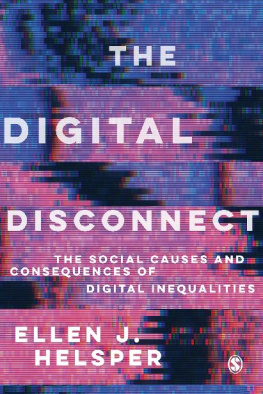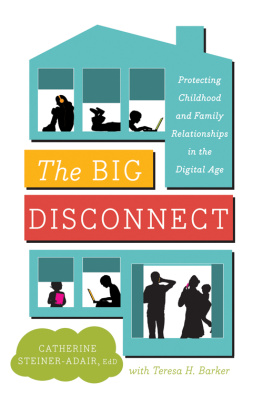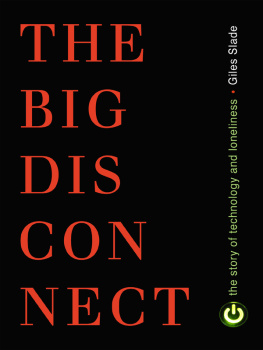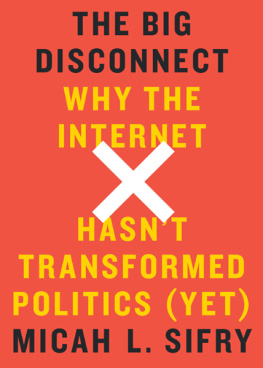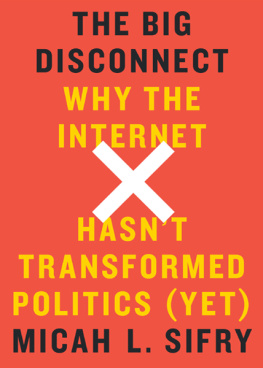Raj Karamchedu - The Disconnect Patterns
Here you can read online Raj Karamchedu - The Disconnect Patterns full text of the book (entire story) in english for free. Download pdf and epub, get meaning, cover and reviews about this ebook. publisher: Saaranga Publishers, genre: Art. Description of the work, (preface) as well as reviews are available. Best literature library LitArk.com created for fans of good reading and offers a wide selection of genres:
Romance novel
Science fiction
Adventure
Detective
Science
History
Home and family
Prose
Art
Politics
Computer
Non-fiction
Religion
Business
Children
Humor
Choose a favorite category and find really read worthwhile books. Enjoy immersion in the world of imagination, feel the emotions of the characters or learn something new for yourself, make an fascinating discovery.

- Book:The Disconnect Patterns
- Author:
- Publisher:Saaranga Publishers
- Genre:
- Rating:4 / 5
- Favourites:Add to favourites
- Your mark:
- 80
- 1
- 2
- 3
- 4
- 5
The Disconnect Patterns: summary, description and annotation
We offer to read an annotation, description, summary or preface (depends on what the author of the book "The Disconnect Patterns" wrote himself). If you haven't found the necessary information about the book — write in the comments, we will try to find it.
The Disconnect Patterns — read online for free the complete book (whole text) full work
Below is the text of the book, divided by pages. System saving the place of the last page read, allows you to conveniently read the book "The Disconnect Patterns" online for free, without having to search again every time where you left off. Put a bookmark, and you can go to the page where you finished reading at any time.
Font size:
Interval:
Bookmark:
CHAPTER 1 | The Bad News
Dont feel like that, take it easy!
Saying like this Mei sat in the chair and looked at her colleague Steve. It was just after 6 oclock in the evening on a Thursday in the U.S. office, in the Silicon Valley, of Emory Semiconductors, Inc.
Emory is one of the fast emerging fabless semiconductor companies with operations in the mainland China and in the U.S., Silicon Valley. Similar to such China-U.S. companies that began at the start of the year 2006, Emorys core development and product marketing teams were located in the Silicon Valley, and pretty much everyone else, including sales, support, system engineering and marketing, were located in the mainland China.
A few minutes earlier Steve and Mei, both engineers, had returned to their cubicles after a two-hour meeting.
The sales VP, who was in Beijing, China, had sent out an email the previous night, calling for an urgent meeting to discuss a critical customer status, emphasizing with red bold letters in his brief message. The meeting was attended by a total of nine people, including sales, marketing, engineering and support departments.
The sales and support departments and the two marketing managers, who were located in China, attended the meeting from Beijing via the videoconference monitor.
Steve, Mei, and their engineering director and the two marketing managers, including David, were in the U.S. office.
It was a total disappointment.
The sales VP began the meeting by informing them that their most important customer, Maple Corporation, had just begun testing a competitors chip.
That competitor was SanGuo Corp, a young startup based in Shanghai.
Worse part of the news is that this customer Maple, which is perhaps the fastest growing consumer electronics company in the industry, now thinks the SanGuos chip is better. SanGuos chip has two extra pins that really made Maple customers system development easy.
In the meeting they all observed that Emory chip doesnt have these two extra pins. These pins were not difficult to implement, but no one thought of putting them in before the tape-out.
There was a look of pain and disappointment on the sales VPs face. Why we dont have these two features? he asked calmly, but everyone could see he was controlling his anger.
It turned out that no one at Emory knew that these two extra pins were important to Maple.
Marketing people were mostly silent, as though they were still digesting the news. But in their minds they were still in denial. Why did the support engineering miss this requirement? was their first thought.
Support engineering had its own explanation. It was this. Four months ago, when the Emorys IC features were being finalized, no one at Emory was in touch with the customer. Why? Because the customer had not reported any problem and there were no open issues with them. So why waste expenses? No budget unless there was a support reason to visit the customer. So the Emory management did not give the support team the permission to visit the customer.
As a result the support team lost touch with the customer for about six weeks during that period. No one at Emory talked to the Maple customers development team. Anyway wasnt it marketings job to keep customer requirements updated? Why support team has to do their job? In any case, the support team doesnt have any authority to step into marketings job function.
Such was the support teams response. It was clear what the competitor SanGuos team was doing in the meantime. They were practically stationed at the Maple customers doorstep.
Sales VPs face became increasingly red. He knew that the SanGuo company is located entirely in Shanghai, including SanGuos core engineering development team. Emory, on the other hand, had split the key teams between the Silicon Valley offices in the U.S., and in Beijing. This meant that while Emory was dealing with the persistent challenges in managing the China-U.S. teams, SanGuo did not have that issue because it was wholly based in Shanghai. By this very fact alone, SanGuo was attending to the customer with a laser-sharp focus. And that was creating daily headaches for Emory Sales VP.
While Emory was dealing with the persistent challenges in managing the China-U.S. teams, SanGuo did not have that issue because it was wholly based in Shanghai.
Then the engineering director Michael, from the U.S. office, spoke.
Bad news.
He said that even though the extra pins themselves are doable fairly quickly on the pin package of the Emorys IC, unfortunately there is no software scheme to create the internal logic after the chip came back from the fab. The new IC silicon is just not designed that way.
So we cannot do anything now.
It was clever, Michael said, that SanGuo had put in these two extra pins. It right away gave an indication of the SanGuos product strategy.
You see, these two extra pins, he said, Are a clear sign that they are thinking ahead at least two generations of their product line.
It turned out those two extra pins will help the customer combine two different protocols in a very attractive way for the consumer market.
That means the customer can now make a system box that would be a three-in-one, and will definitely be the first in the market to do so.
Clearly it would open up new markets, which means additional business volume, to both the customer Maple and to the competitor SanGuo.
Emory is left behind.
But we discussed it right? said the U.S. marketing manager David, with a frustrated look on his face. It was not like that those two extra pins was a great innovation! I had proposed it for the new chip myself. Its all there in the requirements document!
In that moment the support and engineering members recalled seeing something like that in the MRD document a few months ago.
But they never understood why those extra pins were needed for this product.
They had a vague idea of these two pins but they couldnt figure out which of their current customers would use them. It seemed like this feature was for a totally different product.
They thought that requirement was just one more case of marketing guys asking for everything , and wanting it now , without explaining why. They remembered having a hallway discussion on it. Someone was supposed to follow up and have a meeting to review it. But that meeting never happened. Then they got busier and busier and they all forgot the issue.
The sad thing was, concluded the engineering director Michael, if he knew something about their own future product plans, he himself would have come up with the two pins scheme, just like the competition SanGuo had done.
Perhaps even a better scheme, actually, Michael said, now that he was thinking about it.
It makes perfect sense to put in these pins, if we wanted to go in that product direction. Anyone in my team couldve told you that! concluded the engineering director Michael.
Support team members agreed.
But we didnt know anything about our future product direction, said Wei, one of the support engineers.
What is our product direction David? asked Lucy, the sales manager in China responsible for this Maple customer account, with a sarcastic smile on her face, addressing the U.S. marketing manager.
Even on the somewhat blurry picture of the videoconference TV monitor, those in the U.S. office could see Lucys cynical smile. A hint of sarcasm filled Lucys voice coming through the booming audio speaker.
Then, without waiting for the answer, she took her cell phone that just began ringing, and went out of the room.
A minute later Lucy came back into the room.
Visibly angry, she then said, That was the Maple customer. They just told me that their team is now working 100% on the evaluation project with SanGuos chip. They will revisit our project in the future.
Next pageFont size:
Interval:
Bookmark:
Similar books «The Disconnect Patterns»
Look at similar books to The Disconnect Patterns. We have selected literature similar in name and meaning in the hope of providing readers with more options to find new, interesting, not yet read works.
Discussion, reviews of the book The Disconnect Patterns and just readers' own opinions. Leave your comments, write what you think about the work, its meaning or the main characters. Specify what exactly you liked and what you didn't like, and why you think so.


